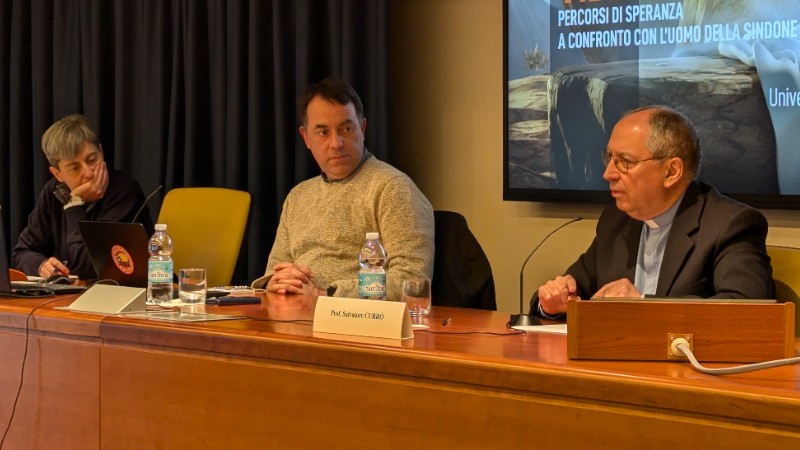
In March, at the Pontifical Salesian University, a roundtable titled He Saw and Believed (Jn 20:8) – Pathways of Hope in Dialogue with the Man of the Sindone took place.
The event, dedicated to teachers and students, offered a multidisciplinary reflection on the Shroud of Turin, the renowned cloth that, according to tradition, is believed to have wrapped the body of Jesus after the crucifixion. The Shroud served as the starting point for a broader reflection on the meaning of Christian hope and its relevance for today's humanity.
An afternoon rich in authoritative contributions
The roundtable, moderated by prof. Cristiano Ciferri, unfolded through various academic inputs that provided an in-depth analysis of the mystery of the Shroud from different perspectives:
Historical Introduction | prof. Gian Maria Zaccone: An analysis of the history and tradition linked to the Sindone, with particular attention to its dissemination and significance over the centuries.
Patristic Reading | prof. Alberto Nigra: An exploration of references to the Sindone in the Church Fathers and their interpretation of the sacred cloth.
Biblical Reading | prof. Guido Benzi: A reflection on the relationship between the Gospel text and the image imprinted on the Sindone, with a focus on the event's guiding verse ("He saw and believed"), highlighting how the Sindone can become a concrete sign of hope.
Anthropological Reading | prof. Salvatore Currò: An examination of the Sindone's impact on culture and society, exploring its symbolic and anthropological value in relation to the theme of hope.
Liturgical Reading | prof. Elena Massimi: An investigation of the role of the Sindone in liturgy and popular piety, with particular attention to its influence on Christian devotion as a source of hope.
An opportunity for deepening knowledge and dialogue
This roundtable represented a valuable opportunity to engage with expert scholars on the significance of the Shroud and its spiritual and historical value. The multidisciplinary nature of the contributions, exploring the topic in a comprehensive and engaging manner, provided participants with tools for both academic and personal reflection, fostering a deeper understanding of Christian hope and its roots.